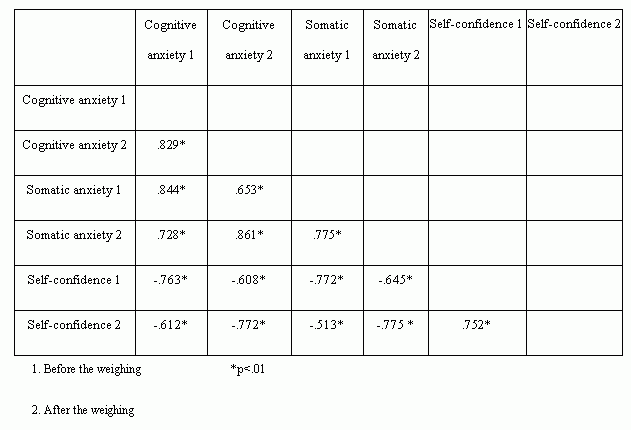Abstract
Objectives:
The aim of this study was to examine the alterations of state anxiety,
before and after weighing, among athletes that had a weight problem
before weighing and those that had not.
Design and Methods: Those who took
part in the survey were 105 high level judo athletes, ranging in age
from 17-38 years old, from all over Greece. The Greek language version
of CSAI-2 was given to the athletes 30 minutes before weighing and 1
hour before competition.
Results: MANOVA 2X2 showed no
significant interaction effects among independent variables on the
state anxiety variables before and after weighing. The independent
samples t-test showed that before weighing the state anxiety of the
athletes who had a weight problem 2 weeks before the competition and
the time of weighing did not change in relation to those athletes that
had no such problem (p>.05), however, after weighing, the state
anxiety of the athletes that had a weight problem before the
competition decreased in relation to those that had no weight problem
(p<.001).
Conclusions: a) before
weighing the state anxiety of the athletes that had a weight problem
was not different compared with the state anxiety of those that had no
weight problem, and b) after weighing, the state anxiety of the
athletes that had a weight problem was decreased compared with the
state anxiety of those that had no weight problem.
Key words: State anxiety, cognitive
anxiety, somatic anxiety, self-confidence, weighing, body weight
control, judo.





